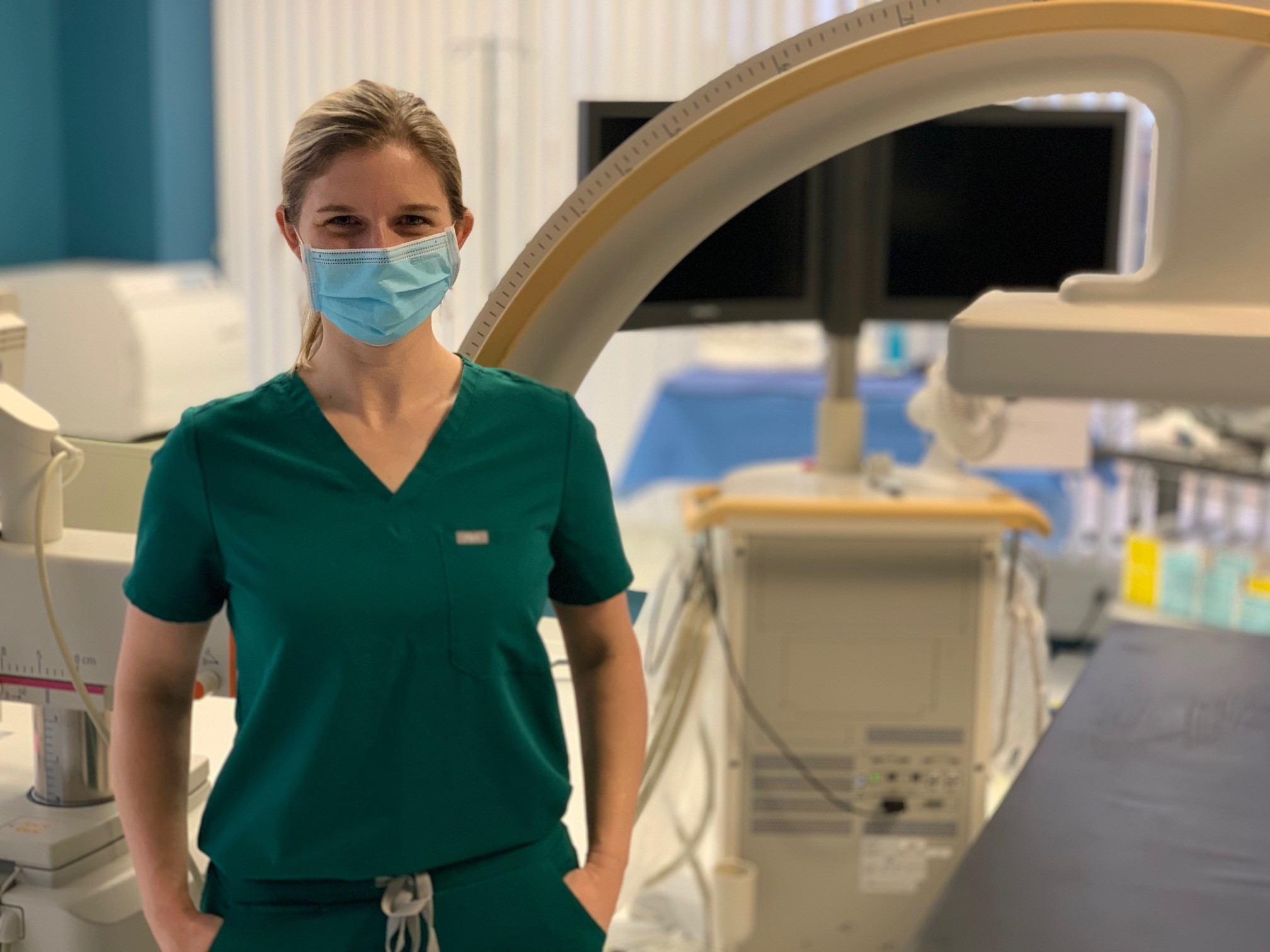Innovative Treatments Offer Help to Patients
March 31, 2021
If you’re among the many people struggling with pain, then you know how difficult it can be. “It’s a silent condition,” says interventional pain management physician Emily Morgan Pollard, MD. “A lot of times you can’t tell by looking that someone is in pain, but over time pain wears people down.”

“Previously, many patients didn’t have access to interventional pain treatments,” Dr. Pollard says. Pain was often treated with prescription medicines, including opioids. “That strategy has a lot of limitations, and now we know it has a lot of risks,” she says. (See sidebar below.)
In her practice, Dr. Pollard helps people with problems like back pain, neck pain or pain in the hips, knees or shoulders. Today, more targeted therapies can address where the pain is coming from and get to the root of the problem, she explains. “Targeted therapy provides better results with fewer side effects.”
Who Can Benefit?
“Most of my patients have back or joint pain that has progressed over time,” Dr. Pollard says. For people who are not surgical candidates or who are not ready for surgery yet, interventional pain care can help.
Patients with diseases such as rheumatoid arthritis, lupus and cancer also may benefit. Additionally, specialized treatment may help people with osteoporosis, who may be more prone to fractures in the spine. For instance, a minimally invasive procedure called kyphoplasty can offer relief by helping to correct bone deformity and stabilize the vertebra.
Innovations in Care
Dr. Pollard says she usually starts with the least invasive options first. For example, epidural steroid injections are sometimes recommended to treat conditions like lower back pain and leg pain.
 When less-invasive treatments are not effective enough, people may consider more advanced treatments, such as spinal cord stimulation. This involves a small device that sends low levels of electricity into the spinal cord to provide relief. “Spinal cord stimulators can be very helpful for several conditions, most commonly back and leg pain,” Dr. Pollard says. “Some newer studies are showing good evidence it also can help with diabetic neuropathy.” A big benefit is that people can test it out with a trial, before they commit to the surgery, she says.
When less-invasive treatments are not effective enough, people may consider more advanced treatments, such as spinal cord stimulation. This involves a small device that sends low levels of electricity into the spinal cord to provide relief. “Spinal cord stimulators can be very helpful for several conditions, most commonly back and leg pain,” Dr. Pollard says. “Some newer studies are showing good evidence it also can help with diabetic neuropathy.” A big benefit is that people can test it out with a trial, before they commit to the surgery, she says.
Another treatment called peripheral nerve stimulation is similar in concept to spinal cord stimulation, she says. It can help treat conditions like chronic shoulder pain or complex regional pain syndrome (CRPS), which usually involves severe pain in the hand, foot, arm or leg. Another up-and-coming treatment approach is regenerative medicine, such as using platelet-rich plasma to take advantage of the body’s own ability to regenerate. Part of Dr. Pollard’s training at the Mayo Clinic was in regenerative interventions.
It is important for people to know that chronic pain does not have to put an end to their quality of life. Many times, there are minimally invasive options. Dr. Pollard says, “It can be comforting to know that people have found strategies and techniques to improve their quality of life.”
Talk with your doctor if you have concerns about pain.Opioids: What You Should Know
Opioid addiction continues to be a serious problem here in Oklahoma and nationwide. While opioids can help relieve pain for a short time for certain patients, they are not meant for long-term use, Dr. Pollard says. “Over time, they’re less effective at relieving pain and have many side effects.” Opioids can be very dangerous. Risks include respiratory depression (slow, ineffective breathing) and even death, she says.
Talk with your doctor if you have concerns about drug addiction, and call 9-1-1 or go to the nearest emergency department right away if you are experiencing a medical emergency.
